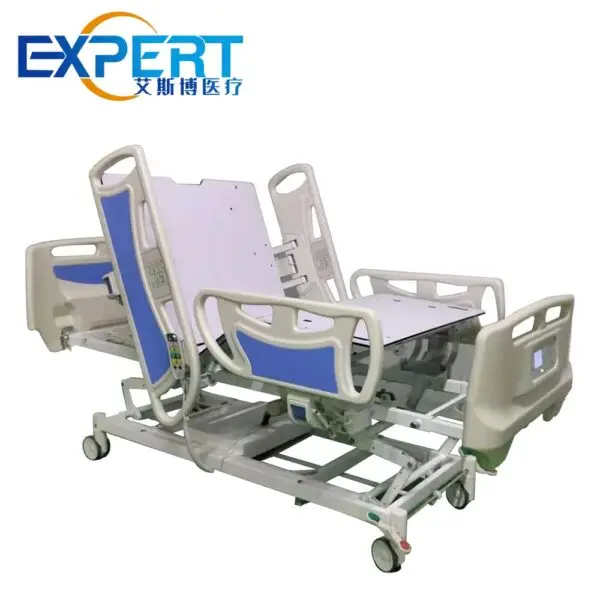Indirizzo
304 Il cardinale nord S.
Dorchester Center, MA 02124
Ore di lavoro
Dal lunedì al venerdì: 7:00 - 19:00
Fine settimana: 10:00 - 17:00
Indirizzo
304 Il cardinale nord S.
Dorchester Center, MA 02124
Ore di lavoro
Dal lunedì al venerdì: 7:00 - 19:00
Fine settimana: 10:00 - 17:00

Selecting the appropriate hospital bed size is a crucial decision that directly impacts patient comfort, safety, and overall well-being. With a wide range of sizes available, it can be overwhelming to choose the best option for your specific needs. This comprehensive guide will delve into the factors to consider when selecting a hospital bed size, providing you with the information necessary to make an informed decision.
Benvenuti nel mio blog!
Prima di immergerci nei contenuti, mi piacerebbe che ti unissi a me sulle mie piattaforme social, dove condivido altre intuizioni, interagisco con la community e pubblico aggiornamenti. Ecco come puoi metterti in contatto con me:
Facebook:https://www.facebook.com/profile.php?id=100071234835011
LinkedIn:https://www.linkedin.com/company/74943205/admin/dashboard/
YouTube: www.youtube.com/@shandongexpertmedicalequip4695
TikTok: www.tiktok.com/@expertmedical
Ora, iniziamo il nostro viaggio insieme. Spero che tu trovi il contenuto qui perspicace, coinvolgente e prezioso.

Selecting the appropriate hospital bed size is a crucial decision that directly impacts patient comfort, safety, and overall well-being. With a wide range of sizes available, it can be overwhelming to choose the best option for your specific needs. This comprehensive guide will delve into the factors to consider when selecting a hospital bed size, providing you with the information necessary to make an informed decision.
Standard size:
Bariatric size:
Pediatric size:
Custom size:
Selecting the appropriate hospital bed size is a critical decision that directly impacts patient comfort, safety, and overall well-being. Several factors must be carefully considered to ensure the best fit for each individual patient.
Mattress options: Different mattress types (e.g., foam, gel, air) offer varying levels of pressure relief and comfort.
Patient anthropometrics: Patient weight, height, and body mass index (BMI) are primary determinants of bed size. Patients with higher BMIs may require bariatric beds to prevent pressure ulcers and provide adequate support. Additionally, patients with specific body proportions, such as those with long legs or wide shoulders, may need customized bed dimensions.
Medical conditions: Various medical conditions necessitate different bed sizes and features. For instance, patients with spinal cord injuries may benefit from specialized beds with adjustable head and foot sections to facilitate positioning and prevent complications. Similarly, patients with respiratory conditions may require beds that can be elevated to improve breathing.
Treatment plan: The patient’s treatment plan can influence the choice of bed size. For example, patients undergoing prolonged bed rest may require beds with additional features such as alternating pressure mattresses to prevent skin breakdown.
Mobility and transfer needs: A patient’s ability to move in and out of bed is a crucial factor. For patients with limited mobility, lower bed heights and side rails can facilitate transfers and reduce the risk of falls.
Room size and layout: The physical dimensions of the patient’s room must be considered to ensure that the chosen bed can be accommodated without compromising accessibility or safety.
Additional features: Hospital beds offer a variety of features that can enhance patient comfort and care. These include:
Regolazione dell'altezza: Allows for easy patient care and transfers.
Posizionamento Trendelenburg e Trendelenburg inverso: Facilitates drainage and promotes venous return.
Sponde laterali: Provide safety and prevent falls.









A hospital bed that is the correct size provides numerous benefits:

The mattress is an equally important component of a hospital bed. Factors to consider when selecting a mattress include:
| Caratteristica | Dimensioni standard | Bariatric Size | Pediatric Size | Custom Size |
|---|---|---|---|---|
| Larghezza | 36 pollici | 42 inches or more | 24-30 inches | Varia |
| Lunghezza | 80 pollici | 80 inches or more | 60-72 inches | Varia |
| Capacità di peso | 300-500 pounds | 800-1,200 pounds | 250 pounds or less | Varia |
| Caratteristiche | Height adjustable, side rails, mattress options | Height adjustable, side rails, mattress options, reinforced frame | Height adjustable, side rails, pediatric mattress options | Customized to meet specific needs |
Selecting the appropriate hospital bed size is a critical decision that can significantly impact a patient’s quality of life. By carefully considering the factors discussed in this guide, you can choose a bed that provides optimal comfort, safety, and support. Remember to consult with a healthcare professional or a medical equipment supplier for personalized recommendations.